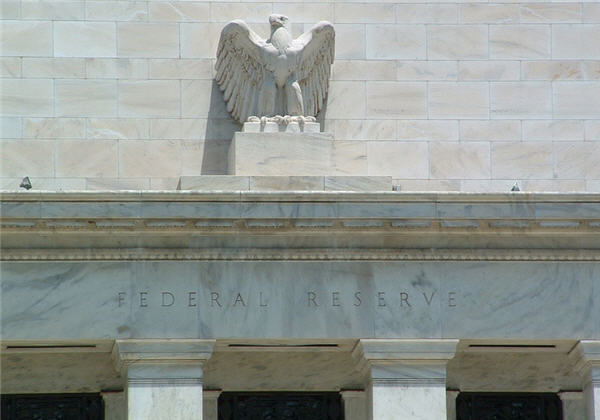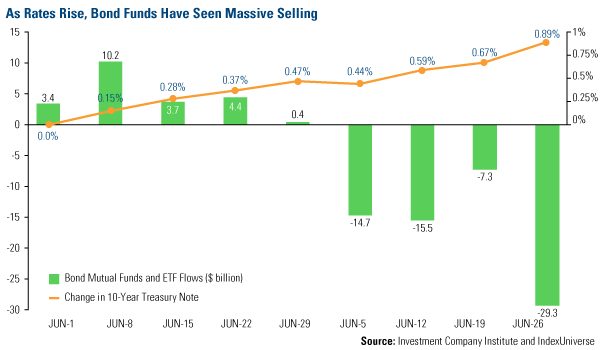 With the Federal Reserve’s intention to taper its easing, yields have risen quickly, causing municipal bonds to experience their worst decline since September 2008. In the second quarter, the Barclays Capital Municipal Bond Index lost nearly 3 percent, with the long end of the yield curve receiving the biggest blow, as bonds maturing in 20 years fell more than 4 percent.
With the Federal Reserve’s intention to taper its easing, yields have risen quickly, causing municipal bonds to experience their worst decline since September 2008. In the second quarter, the Barclays Capital Municipal Bond Index lost nearly 3 percent, with the long end of the yield curve receiving the biggest blow, as bonds maturing in 20 years fell more than 4 percent.
Exacerbating this decline was negative sentiment. Once fixated on fixed income, investors are now making a mad dash for the door. In June, a record $80 billion was pulled out of bond mutual funds and ETFs, according to TrimTabs data.

We view this swift shift as a buying opportunity, as yields seemed to have moved too far, too fast, says Portfolio Manager John Derrick. According to our proprietary internal indicators, the 10-Year Treasury, which is a proxy for the bond market, appears drastically oversold and due for a reversal.
In addition, higher yields may not be sustained in the short-term, as current economic data is not very inspiring. First quarter GDP in the U.S. was recently revised lower to 1.8 percent. Second quarter GDP is forecasted to be 1.7 percent. And despite Bloomberg estimates that the nation’s GDP will climb to 3 percent by the third quarter of 2014, the optimistic forecasts have failed to materialize in past years.
The economy is also lacking significant job growth. Although nonfarm payrolls increased by 195,000 in June, most of the jobs created were part-time. According to Weldon Financial, full-time jobs decreased 240,000 and part-time jobs increased 360,000, evidence of a “chronic, long-term unemployment and dysfunction in the U.S. labor market.”
With real growth in the U.S. and global economy failing to materialize to date, the Fed may not want to risk taking away the stimulus until economic growth is more certain. To help us determine this, we’ll continue to keep a close eye on the following:
We believe bonds continue to be an attractive investment for those looking for regular income. “Investors will continue to want bond exposure,” says Brian Reid from the Investment Company Institute, with demand “driven by an aging population looking for diversification out of stocks and by investment vehicles such as target date funds, which allocate a certain portion of their investments to the fixed-income sector.”
Take a closer look at the current yields of the Near-Term Tax Free (NEARX) and Tax Free (USUTX)Funds.
Please consider carefully a fund’s investment objectives, risks, charges and expenses. For this and other important information, obtain a fund prospectus by visiting www.usfunds.com or by calling 1-800-US-FUNDS (1-800-873-8637). Read it carefully before investing. Distributed by U.S. Global Brokerage, Inc.
All opinions expressed and data provided are subject to change without notice. Some of these opinions may not be appropriate to every investor.
Tax-exempt income is federal income tax free. A portion of this income may be subject to state and local income taxes, and if applicable, may subject certain investors to the Alternative Minimum Tax as well. Each tax free fund may invest up to 20% of its assets in securities that pay taxable interest. Income or fund distributions attributable to capital gains are usually subject to both state and federal income taxes. Bond funds are subject to interest-rate risk; their value declines as interest rates rise. The tax free funds may be exposed to risks related to a concentration of investments in a particular state or geographic area. These investments present risks resulting from changes in economic conditions of the region or issuer.